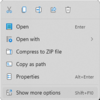heax
Member
- Local time
- 4:31 AM
- Posts
- 13
- OS
- Windows 10
Just had the first failed boot after updating the BIOS, so that didn't fix the issue. What I realised is that by taking out any usb device on the front panel while stuck in the spinning dots screen, the keyboard becomes responsive for like a second. System will still not continue to boot but keyboard rgb stays on for a little bit. If I spam any key when this happens, keyboard will stay on for as long as I spam.
Instead of forcing shutdown two times like I always do to get to the troubleshoot screen, I've tried spamming the keyboard so it stays on. System booted properly by doing this.
What's causing this? I'm so confused at this point! Found a temporal fix for it, but spamming my keyboard on every boot isn't ideal.
Instead of forcing shutdown two times like I always do to get to the troubleshoot screen, I've tried spamming the keyboard so it stays on. System booted properly by doing this.
What's causing this? I'm so confused at this point! Found a temporal fix for it, but spamming my keyboard on every boot isn't ideal.
My Computer
System One
-
- OS
- Windows 10
- Computer type
- PC/Desktop
- CPU
- AMD Ryzen 7 3700X
- Motherboard
- B550M Aorus Elite
- Memory
- 32gb 3600mhz
- Graphics Card(s)
- RTX 3070 INNO3D
- Monitor(s) Displays
- Asus TUF 144hz, Acer 75hz
- Screen Resolution
- 1920x1080
- Hard Drives
- Kingston A400 480gb SSD , Seagate 2TB HDD, WD 1TB HDD
- PSU
- EVGA 750gt GOLD Modular
- Case
- NOX HUMMER Zero
- Cooling
- Stock
- Keyboard
- Krom Kernel
- Mouse
- Rival 100

















